Strategic Messaging: The Written Foundation of Your Brand
If you’re rebranding, forming a DBA, or simply refining your marketing strategy, you might wonder, “Where do I start?”
What elements of your marketing should take priority? How do you make sure everything aligns with the brand identity you want to portray? What project should you focus on first so you don’t have to backtrack or edit things later?
When we help advisors define and refine their brands, we tackle one project very early in the process—strategic messaging.
Your messaging is all the content you write and speak on behalf of your firm. It includes the headline on your website, the intro verbiage in your capabilities deck, and everything in between—and because words are something you’ll use on almost every piece of marketing material, you want to choose the right ones. You need a specific framework and tone that defines what you say and how you say it so you can create a powerful, cohesive message across all your marketing.
Enter: Your Brand Story.
Your brand story (or “core message,” as we like to call it) is the written content that concisely, powerfully tells the story of your firm. It explains what you do, who you work with, and what sets you apart from other advisors. It sets the tone for your entire brand, and it’s the foundation for all the other content you’ll use in your marketing. Not only that, but sometimes it sparks ideas for themes that can be carried out visually in your brand. For example, you might position your firm as a guide who leads clients on exciting adventures through life; from there, you might decide to use images of mountain peaks and hikers on your website and in other materials. With the right messaging, you can paint a fairly complete picture of your firm, which is why it’s a great place to start when building a powerful brand.
Your Brand Story, Unpacked
So what does a brand story look like?
There are several components to a brand story, and you’ll use each of them in various ways in your marketing. You’ll use some components on your social media profiles, some for one-pagers, and most on your website. Here are the elements that make up your brand story:
Brand Promise: This tells what you do and who you do it for in a short, powerful sentence or phrase. It’s sometimes called your unique value proposition, or UVP, and it’s often used in places like a website’s homepage (as the main headline) or the title slide of a capabilities deck. For example, if you spend time educating business owners and helping them make better financial decisions, you might say something like this:
HELPING DRIVEN BUSINESS OWNERS TAKE CONTROL OF THEIR FINANCIAL FUTURE
You can also use a combination of a headline and sub-headline, writing one powerful phrase that explains what clients get from working with you, and then following up with a clarifying statement, like this:
TAKE CONTROL OF YOUR FINANCIAL FUTURE
Comprehensive wealth management for successful professionals and entrepreneurs
One of the most important objectives in all of your messaging, and particularly in your brand promise, is to speak to your clients’ core desires. (In fact, did you notice how the two examples above don’t focus as much on the advisor as they do the client?) You’re not just telling them about yourself; you’re confirming you can give them what they really want out of life. If you work with a lot of retirees who just want to know they’re “okay” and that they can enjoy their future, make sure your brand promise offers the same assurance, confidence, and peace of mind that you do when working with clients.
Firm Overview: This is typically a paragraph or two of content that explains who you are and what you do, and it essentially summarizes what clients experience when they work with you. It paints a big-picture overview of what their life will be like if they choose you to be their advisor. Like your brand promise, it should speak to your target market’s core desires, but this is your chance to explain a little more about how you help clients. It’s not super detailed, but it should highlight what makes you different, your approach to planning, and the ultimate benefit of working with you—and it should do so in a creative, compelling way. You can check out some examples in our website portfolio.
Unique Points of Differentiation: Your brand story is all about sharing what’s unique and special about your practice, and oftentimes there’s more to say than will fit in your firm overview. Maybe you have a set of core values you operate by, or there are three things your firm does really well that you want to highlight. You can take those elements and briefly describe them in a separate section with a title like “Our Values,” “Our Difference,” or whatever fits with the content you write. You might use this verbiage on your social media profiles, as part of your welcome packet, or on a page of your website. The point is that you have the chance to say everything you need to say without overwhelming readers by trying to fit it into one piece of content. Which brings us to our next point…
Say What You Need to Say
When it comes to website content specifically, the trend is “less is more,” but the amount of verbiage you use can vary depending on your style and target market. If you work with extremely busy entrepreneurs, you probably want to keep things short and sweet. If you work with retirees who like to take things slow and ask a lot of questions, a little more content might be good. Most people are looking at your website to vet you, so you want to give them enough information that makes them feel comfortable reaching out to you, but not so much that it overwhelms them. Whatever you need to say, the key is to make it feel like a small amount of content. You can do that a few different ways:
- Separate verbiage into smaller sections with headlines so people can easily skim and scan.
- Break up content with graphics.
- Write “teaser” sentences with “read more” links. These links can then expand the page or section to reveal the rest of the content (we call that an “expando”) or direct the user to a new page. The link could also open a pop-up with the rest of the verbiage.
How Your Brand Story Increases Referrals
Refining your brand story can increase your referrals and conversions in several ways:
- It helps you clarify who you are and what you’re not, which allows you to focus your marketing efforts on the right people.
- It helps you weed out prospects who aren’t the right fit. If you’re a holistic advisor who primarily works with successful business owners, you can say that in your messaging, and young families or professionals looking for a “quick fix” will see you’re probably not the best fit for them.
- It gives current clients a clear message to share with friends and family members who ask for a referral. It helps them articulate why they love working with you and the difference you make in their lives.
- It helps convert prospects who are vetting you—when you describe a situation much like their own in your core message, and when you mention a type of client they relate to, you confirm that you understand them and can help them solve their problems.
Ultimately, your brand story gives you a concrete picture of who you are and what your practice is, and you can use that information to fuel all your marketing efforts. It establishes a foundation from which to build your brand, which is why crafting this message is one of the first things we do for new clients. Once you have a strong brand story, you can take the themes and phrases from that message and create other collateral—social media profiles, emails, one-pagers, even signs in your office.
If you need help crafting the perfect brand story, we’d love to help. You can schedule a consultation with us here.










